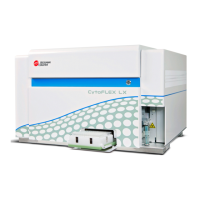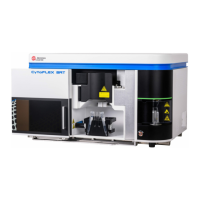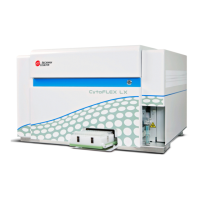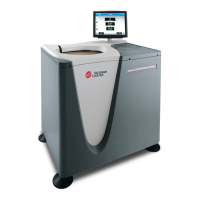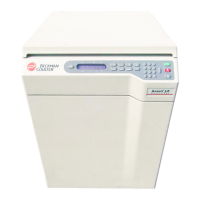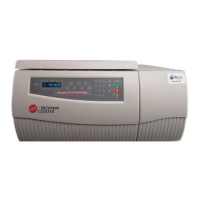PN 177196BB
7-12
DATA MANAGEMENT AND REVIEW
DATA ANALYSIS - MEASUREMENT PRINCIPLES
A
C
V Differential Technology
1. In the AcV Technology, cells are cytochemically treated to preserves WBCs at their
original size while differentially staining lymphocytes, monocytes, neutrophils, and
eosinophils.
2. The AcV Technology uses both the Coulter principle (to determine the cell volumes of
the WBCs) and absorbance readings (to detect the difference in staining characteristics
of the WBCs) to obtain data for developing the DiffPlot.
3. Sequential analyses for cell volume (impedance) and light absorbance are performed in
the flow cell.
a. A total of 72 µL of sample from the DIFF bath is injected through the flow cell for
15 seconds.
b. Data for developing the DiffPlot is accumulated in 12 seconds.
c. Flow cell incorporates a 60 µm aperture for cellular volume analysis and about a
40 µm measurement area for light absorbance
d. Flow cell lamp is a 20 watt incandescent tungsten-halogen lamp.
4. Each stained cell is individually focused and transported through the flow cell by sample
pressure and Diluent sheath flow.
a. The Dual Focused Flow (DFF) uses sheath fluid to surround and force cells
suspended in Diluent to pass one at a time through the center of the flow cell
(hydrodynamic focusing process).
1) The first sheath flow focuses sample through the impedance aperture.
2) The second sheath flow maintains the focused flow of cells as they exit the
aperture into the optical flow cell.
b. Hydrodynamic focusing in the flow cell enables accurate and rapid cell-by-cell
measurements on a large number of individual cells.
5. The Coulter Principle is used to measure the resistance of the WBCs in the impedance
aperture. The change in electrical resistance is directly proportional to the cell volume.
Dual Focused Flow (DFF)
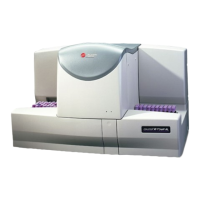
